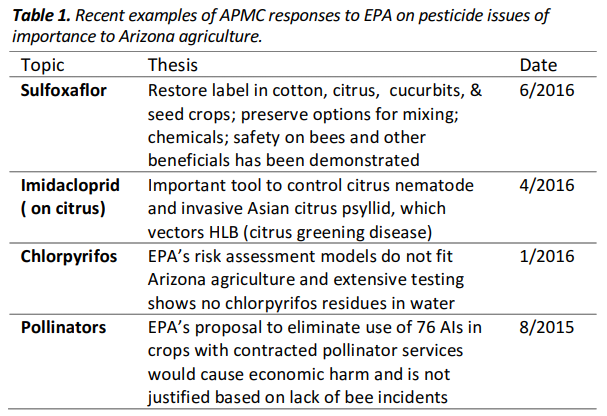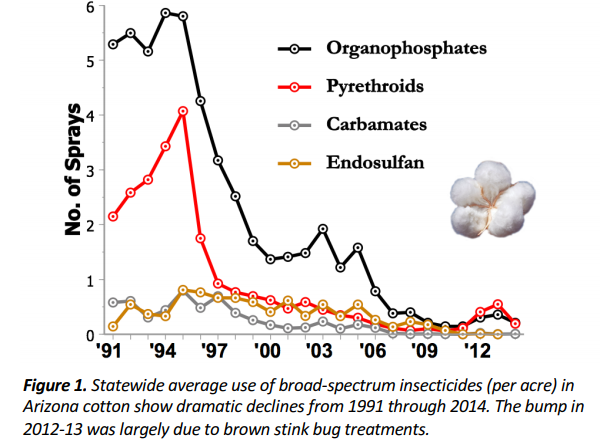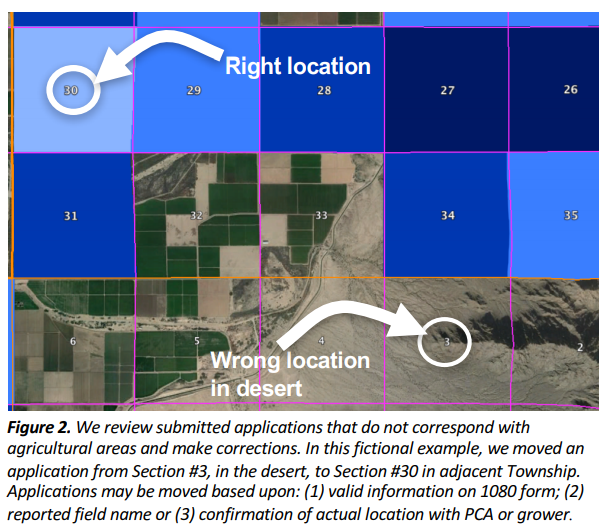Pesticide Use Data – Why Getting It Right Matters
Accurate data on agricultural pesticide use in Arizona has many uses that benefit grower communities:
• Data help the Arizona Pest Management Center (APMC) respond effectively to EPA pesticide registration reviews and other policy decisions to defend the important tools you have available to control pests (Table 1).
Real use data can impact registration decisions more than uninformed opinions. Since 2005, the APMC has prepared more than 40 responses to pesticide registration issues, available at:
http://ag.arizona.edu/apmc/Arid_SWPMC_Info_Requests.html
•
Data support research & outreach for effective pest management decisions. Examples include chemical use maps that can help pest control advisors (PCAs) manage whiteflies while reducing the chance of developing resistance:
http://ag.arizona.edu/crops/cotton/files/1stPrinciples.pdf
http://ag.arizona.edu/crops/cotton/files/UseMaps.pdf
• Data document long-term pesticide use trends that
reveal a successful and progressive Arizona agriculture industry with active environmental stewardship (Fig. 1):
http://cals.arizona.edu/apmc/docs/NIFA-IPM-ProgramsLegacy-and-Impacts_extract.pdf
• The
APMC Pesticide Use Database captures Pesticide Use Reports (L-1080) submitted to the Arizona Department of Agriculture. An advisory board of growers, PCAs and registrant company representatives advises our use of these data.
The accuracy of pesticide use data impacts the quality of our outreach, publications and reports. We review data and correct occasional errors to make our information as accurate as possible. While errors represent only a fraction of the data, with an average of 30,000 1080s submitted annually, and over 100 data fields for each 1080 record,
even low error rates can lead to significant flaws in aggregated data. Errors include data entry errors, duplicated data (submitted to ADA more than once), and invalid location data (Township, Range & Section) (Fig. 2).
How Can You Help?
•
Submit each 1080 form to ADA only once. If you submit data electronically (e.g., through Agrian), ADA has confirmed that a signed faxed or mailed copy should not be submitted also.
•
Check legal (location) descriptions for your fields. Invalid township, range or section numbers are among the most common errors we see. Check our website for mapping tools that can help you verify field locations.
http://cals.arizona.edu/apmc/1080support2.html
• Have a Question? We are glad to help. Contact Al Fournier at 520-374-6240 or fournier@cals.arizona.edu.


